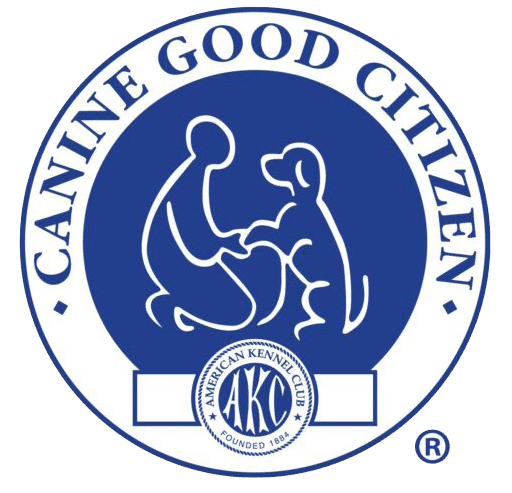We all want the best for our dogs, including nutrition. And anyone who has shopped for dog food knows, there are virtually unlimited options: Hundreds of brands with innumerable ingredients; wet, dry, and raw food; age-specific food; restricted diets, along with all sorts of advertising and marketing claims to decipher. The label is the best tool to use when you make a choice, but can often be hard to understand. We’re here to demystify how to read a dog food label.
Dog Food Label Format
All pet food labels follow roughly the same format:
- Product and brand name or unique identifier.
- Quantity in terms of product weight, liquid measure, or count, depending on the formulation of the food.
- Guaranteed analysis, which specifies the amount of specific nutrients.
- Ingredients, which must be listed in descending order by weight.
- Nutritional adequacy statement, which must be backed up by testing
- that proves the food provides a certain level of nutrients. It may also include the life stages the food is appropriate for.
- Feeding directions.
- Manufacturer’s name and address
- Calorie statement
Now that you know what is listed, what does it all mean? Let’s take them one at a time.
Product Name
Quick Tip: It’s all in the wording.
There’s more to the product name than clever marketing. The name will actually give you your first clue about the ingredients. Because so many pet owners base their buying decision on a specific ingredient, brands will try to highlight that ingredient in the product name. But it’s all in the wording. The Association of American Feed Control Officials (AAFCO) has four rules:
- The 95 Percent Rule: At least 95 percent of the product must be the named ingredient, for example, “Chicken for Dogs,” or “Salmon Dog Food,” must include at least 95 percent of chicken or salmon, respectively. In addition, this main product must be at least 70 percent of the total product when counting the added water. According to AAFCO regulations, the remaining five percent of ingredients will be those required for nutritional reasons, such as vitamins and minerals, and small amounts of any other ingredients.
- The 25 Percent Rule: When you see products named “Beef Dinner for Dogs,” “Chicken and Sweet Potato Entrée,” or “Lamb Platter,” for example, this is the 25 percent rule in action. If the named ingredients comprise at least 25 percent of the product (not counting the water for processing), but less than 95 percent, the product name must include a qualifying term, such as dinner, entrée, or platter. Counting the added water, the named ingredients still must comprise 10 percent of the product. If more than one ingredient is included in a “dinner,” the combination of the named ingredients must total 25 percent of the product and be listed in the same order as found on the ingredient list.
- The “With” Rule: When you see a dog food label, such as “Doggie Dinner With Beef,” the “With . . .” ingredient need only be at least 3 percent of the product. Just the addition of that one word — “with” — dramatically changes the percentage requirement of the ingredient in the food and is a good reason to pay attention to the product name.
- The Flavor Rule: According to the U.S. Food and Drug Administration (FDA), if the label says “Beef Flavor Dog Food,” then “a specific percentage (of the beef) is not required, but a product must contain an amount sufficient to be able to be detected.” In this example, the word “flavor” must appear on the label in the same size, style, and color as the word “beef.”

Quantity
Quick Tip: Don’t go by looks.
The quantity listed on the label tells you how much of the food is in the container. This may be measured by weight, liquid measure, or by count. Products can vary in density (think wet food vs. dry food, for example). So if you really want to know how much a product costs, do a cost-per-ounce or cost-per-pound comparison.
Guaranteed Analysis
Quick Tip: Look at the basic four: protein, fat, fiber, and water.
Many states have regulations requiring the minimum amount of nutrients a pet food must contain, as well as the maximum amount of moisture and crude fiber. Dog food labels must display the percentage of crude protein, crude fat, crude fiber, and water. For those who like to get really technical, there’s a detailed explanation of how the guaranteed analysis is calculated on the FDA website.
If there are specific guarantees, such as that the food is low-fat, then both the maximum and minimum percentage of the item must be guaranteed. If a product claims to have vitamin or mineral supplements, there must be a guarantee of the amount the product supplies.
Ingredients
Quick Tip: Ingredients are listed in order by weight.
According to Dr. Jerry Klein, the AKC’s chief veterinary officer, the ingredients section is the most important part of the label to read. Ingredients must be listed in descending order by weight. Each ingredient must be listed individually, and, according to AAFCO regulations, terms describing collective ingredients, such as “animal protein products” are not allowed. In addition, ingredients must be listed by their “common or usual name.” The AAFCO has a detailed list of ingredients, their common names, and what they contain.
A word about byproducts: While we may not want to eat them, byproducts are not necessarily a bad addition in dog food. They include parts such as the liver, which is rich in vitamin A. Other byproducts include blood, brains, bone, stomach, and cleaned intestines. Meat meal may also contain ingredients we consider byproducts. It sounds gross, but your dog might not agree.
Nutritional Adequacy Statement
Quick Tip: Look for the fine print on the side or back of the package.
Many dog foods claim to be “complete and balanced” or “100 percent nutritious.” These aren’t just marketing terms. Dr. Klein says, “The phrase means that the food has met specific government standards and provides complete and balanced nutrition for all life stages of adult dogs, as determined by AAFCO.” The food has to contain the proper amount and ratio of essential nutrients for the needs of a healthy dog.
Often the nutritional adequacy statement identifies the life stage the food is appropriate for. AAFCO recognizes these stages:
- Gestation/lactation
- Growth
- Maintenance
- All life stages
Some products are labeled for a more specific use or life stage, such as “senior” or for a specific size or breed. The FDA says, “There is little information as to the true dietary needs of these more specific uses, and no rules governing these types of statements have been established. Thus, a “senior” diet must meet the requirements for adult maintenance, but no more.”
The nutritional adequacy statement must be in a standardized format, which makes it easy to compare products.
Feeding Directions
Quick Tip: Feeding directions are guidelines, not regulations. Regardless of what the package says, consult your vet.
This is pretty straightforward — the label tells you how much you should feed your dog. This is listed either by the weight of the food per pound or measure of food per cup. However, as the FDA says, breed, temperament, environment, and many other factors can influence food intake.
According to Dr. Klein, it’s also important to note the “sell-by” or “best-used-by” statement. He says, “Due to the nature of the ingredients used in all dog foods, including fats and proteins, the food can go rancid. Expired dog food offers less nutritional value and can grow harmful bacteria or mold that can sicken your dog.”

Deciphering the Descriptive Terms
There are so many new trends in pet food that it can be difficult to know exactly what you’re getting. Is “organic” the same as “natural”? What does “lite” mean? Is “grain-free” a good thing? Does my dog need “new proteins”?
Organic: There are currently no official regulations specific to the labeling of organic foods for pets, although the U.S. Department of Agriculture (USDA) is developing some. In the meantime, dog foods that claim to be organic must meet the ingredient, production, and handling requirements of the USDA’s National Organic Program to be considered organic. In simple terms, organic dog food is defined the same way organic human food is:
- No artificial preservatives, coloring, or flavoring.
- No antibiotics or growth hormones in meat and meat by-products.
- No or little fillers.
Is organic pet food better? The jury is still out on this. High-quality commercial dog food meets the AAFCO’s stringent nutritional guidelines and lists any type of fillers fairly low on the ingredient list. Sometimes dogs with sensitive stomachs do better with organic food, and some organic foods have beneficial antioxidants. Organic food is, however, more expensive. Frankly, it’s your call.
“Natural” is not the same as “organic.” The latter term refers to the conditions under which the plants were grown or animals were raised. For the most part, “natural” can be construed as equivalent to a lack of artificial flavors, artificial colors, or artificial preservatives in the product
Grain-free: There is little veterinary science to support the benefits of grain-free dog food. That being said, Lisa Freeman, veterinary nutritionist and professor of clinical nutrition at Cummings School of Veterinary Medicine at Tufts University, has written that there’s a possibility that an increase in a heart disease called cardiomyopathy is “associated with eating boutique or grain-free diets, with some of the dogs improving when their diets are changed.” Some dogs actually do better with the high-fiber content of grains. Grain-free diets are also being reviewed at this time by the FDA because there is the concern of a possible link of certain dogs or breeds of dogs to Dilated Cardiomyopathy (DCM) — a type of canine heart disease that affects the heart muscle in certain dogs or breeds of dogs.
New proteins: No, they’re not really new. They derive from sources such as bison, kangaroo, rabbit, and other “exotic” animals. It’s tough to rate their benefits because they have different digestibility and nutrient profiles than the more common proteins. They may be suitable for dogs that have difficulty eating chicken, beef, or other meats.
Human-grade dog food: Defined as a food that is legally edible and approved as nourishment for humans, human-grade food is highly regulated by the FDA and the USDA. However, according to the AAFCO, for a product to be human edible, all ingredients in the product must be human edible and the product must be manufactured, packed and held in accordance with federal regulations in 21 CFR 110, Current Good Manufacturing Practice in Manufacturing, Packing, or Holding Human Food.
Also, human-grade dog food is not necessarily safer, tastier, or less expensive than high-quality pet food.
Lite, low-calorie, and low-fat: To use any of these terms, the food must have a significant reduction of calories or fat compared to standard pet food. The AAFCO requires that labels making these claims must show the percentage reduction in calories or fats and must name a product for comparison.
Cheat Sheet for Reading Pet Food Labels
You probably now know more than you ever thought possible about all those words on your dog’s food packaging. This information should make you a better-informed consumer, helping you to choose the best possible diet for your pup. Here’s a quick cheat sheet to help you remember all of this when you’re standing in the dog food aisle:
- The ingredient listed first is the greatest ingredient in the food by weight.
- The sell-by date will help prevent you from buying food that may have gone bad.
- The guaranteed analysis tells you how much protein, fat, fiber, and water the food contains.
- The quantity of different products should be compared on a cost-per-pound or cost-per-ounce basis.
- The feeding directions are recommendations, not rules. Check with your vet.
*Labeling is regulated on the federal level by the U.S. Food and Drug Administration (FDA), which establishes standards for all animal food. Some states have their own regulations, which are often adopted from the regulations of the Association of American Feed Control Officials (AAFCO)



